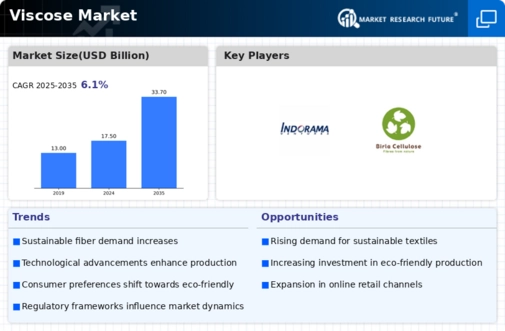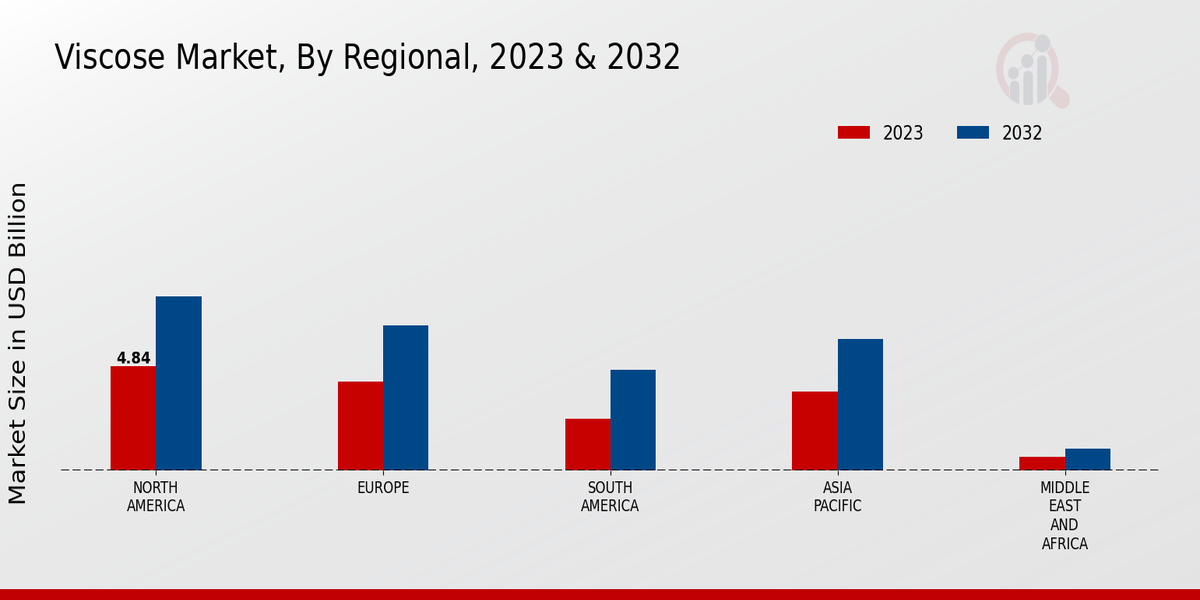Sustainable Fiber Demand
The increasing consumer preference for sustainable and eco-friendly textiles is a pivotal driver for the Global Viscose Market Industry. As awareness regarding environmental issues grows, brands are increasingly adopting viscose as a sustainable alternative to synthetic fibers. Viscose, derived from natural cellulose, offers biodegradability and a lower carbon footprint compared to petroleum-based fibers. This shift is reflected in the market's projected growth, with the Global Viscose Market expected to reach 17.5 USD Billion in 2024. The demand for sustainable fashion is anticipated to bolster the market further, as consumers prioritize eco-conscious choices.
Consumer Awareness and Education
The rise in consumer awareness regarding textile sustainability is a driving force in the Global Viscose Market Industry. As consumers become more educated about the environmental impacts of their purchases, there is a growing demand for products made from sustainable materials like viscose. Brands that prioritize transparency and sustainability in their supply chains are likely to gain a competitive edge. This shift in consumer behavior is expected to drive the market's growth, as more individuals seek out viscose products that align with their values. The increasing emphasis on ethical consumption is likely to shape future market dynamics.
Government Regulations and Support
Government regulations promoting sustainable practices and the use of renewable resources are shaping the Global Viscose Market Industry. Many countries are implementing policies that encourage the production and consumption of eco-friendly textiles, including viscose. These regulations often provide incentives for manufacturers to adopt sustainable practices, thereby enhancing the market's growth potential. As governments worldwide focus on reducing environmental impact, the viscose industry is likely to benefit from increased support and funding. This favorable regulatory environment may further stimulate the market, aligning with global sustainability goals.
Rising Apparel and Home Textiles Sector
The expanding apparel and home textiles sector is a key driver for the Global Viscose Market Industry. Viscose fibers are favored for their softness, breathability, and versatility, making them suitable for a wide range of applications, from clothing to home furnishings. The increasing demand for fashionable and comfortable textiles is expected to propel the market forward. As the global population grows and disposable incomes rise, the demand for viscose-based products is likely to increase. This trend is expected to contribute to a compound annual growth rate of 6.12% from 2025 to 2035, indicating a robust market trajectory.
Technological Advancements in Production
Innovations in viscose production technology are significantly influencing the Global Viscose Market Industry. Enhanced manufacturing processes, such as the development of closed-loop systems, reduce waste and improve resource efficiency. These advancements not only lower production costs but also enhance the quality of viscose fibers, making them more appealing to manufacturers and consumers alike. As a result, the market is poised for substantial growth, with projections indicating a rise to 33.7 USD Billion by 2035. The integration of technology in production processes is likely to attract investments and foster competitiveness within the industry.














Leave a Comment